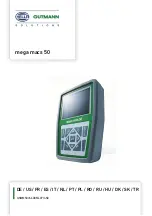
Chapter 11
FID Troubleshooting
Maintaining a FID
Maintenance and Troubleshooting Manual
215
The FID sensitivity will be reduced as hydrogen flow rate is above or below the
optimal value. The flow rate of the air is less critical than the hydrogen one. An
excessive amount of air will destabilize the flame, causing noise and eventual
flameout.
NOTE
Generally the air flow rate must be set to about 10 times the hydrogen flow rate to keep the
flame lit.
A low flow rate of air would reduce the detector sensitivity.
The guidelines in Table 11-4 show typical FID operating conditions.
Table 11-4.
Typical FID Operating Conditions
Gas
Capillary Columns
Packed Columns
Carrier
2 mL/min
40 mL/min
Hydrogen
35 mL/min
40 mL/min
Air
350 mL/min
500 mL/min
Make-up gas (Nitrogen) 30 mL/min
Not used
For high sensitivity applications, it is essential that you exclude all traces of
organic contamination from the chromatographic system and/or from the gas lines
of the detector. Such contamination would cause ghost peaks in the chromatogram
or, more commonly, an unstable baseline.
WARNING! It is the customer’s responsibility to ensure compliance with all local safety
regulations concerning gas supplies.
Hydrogen is a potentially dangerous gas. Mixed with air it may give rise to an
explosive mixture. The use of hydrogen requires the operator’s extreme caution due
to the risks involved. For further details concerning hydrogen, please refer to
Flame Ignition
You can ignite the flame as soon as the detector temperature has reached 150°C.
















































